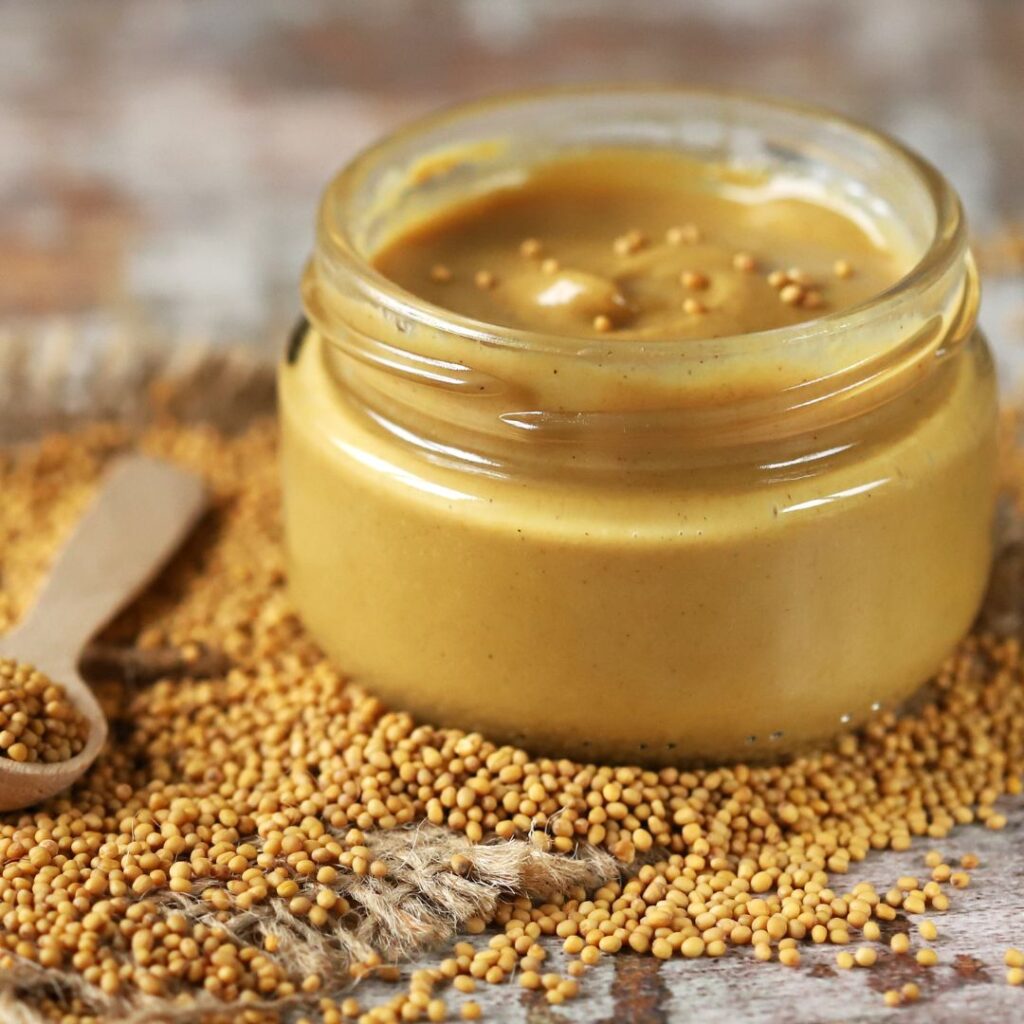
Delve into the fascinating world of Mustards, from the tiny seeds to the flavorful condiments. Discover the various types of mustard seeds, their culinary uses, and how they transform into beloved condiments. Unleash the vibrant flavors and textures of mustards and elevate your dishes with a tangy twist.
Introduction: Mustard, with its bold and tangy flavor, is a staple in many cuisines around the world. From the tiny seeds to the delightful condiments, mustards offer a range of tastes and textures that can elevate dishes to new heights. In this blog post, we will embark on a journey through the world of mustards, exploring the different types of mustard seeds, their culinary uses, and how they transform into the beloved condiments we know and love.
Mustard Seeds: A Palette of Flavors
- Yellow Mustard Seeds: Also known as white mustard seeds, these seeds are mild and slightly tangy. They are commonly used to make American-style yellow mustard. Yellow mustard seeds are versatile and add a tangy kick to dressings, marinades, and pickles.
- Brown Mustard Seeds: With a stronger and more pungent flavor, brown mustard seeds are a staple in Indian cuisine. They are a key ingredient in mustard oil and lend a distinct spiciness to curries, chutneys, and spice blends.
- Black Mustard Seeds: Smaller in size and with a potent, peppery flavor, black mustard seeds are often used in South Asian and Mediterranean cooking. They are frequently toasted to release their aroma before being incorporated into dishes like stir-fries, lentil preparations, and pickles.
From Seeds to Condiments
- Dijon Mustard: Dijon mustard, originating in France, is made from brown or black mustard seeds and white wine or wine vinegar. It has a smooth texture, tangy taste, and a hint of spiciness. Dijon mustard is a versatile condiment, perfect for sandwiches, salad dressings, and marinades.
- Whole Grain Mustard: Whole grain mustard is made by combining various mustard seeds with vinegar, water, and spices. It offers a coarse texture and a burst of flavor from the intact mustard seeds. It pairs well with grilled meats, cheese platters, and adds a delightful crunch to sandwiches.
- Spicy Mustard: Spicy mustards, like English or German mustard, are made from a combination of mustard seeds, vinegar, and spices. They have a robust, fiery flavor that complements sausages, pretzels, and other savory dishes.
Mustard in the Kitchen
- Mustard as a Marinade: Use mustard as a base for marinades, as it helps tenderize meats and adds a tangy flavor. Combine mustard with herbs, spices, and a touch of acidity like lemon juice or vinegar for a flavorful marinade.
- Salad Dressings and Vinaigrettes: Add a zingy twist to your salads by incorporating mustard into dressings and vinaigrettes. It brings depth and tanginess to the mix and can be combined with olive oil, vinegar, honey, or other ingredients for a well-balanced dressing.
- Condiment Combinations: Mustard can be used alone or paired with other condiments to create delicious flavor combinations. Experiment with mixing mustard with mayonnaise, ketchup, honey, or horseradish for unique dipping sauces or sandwich spreads.
FAQs
Q1: Is mustard spicy? Mustard can have varying levels of spiciness depending on the type of mustard seeds used. Yellow mustard is mild, while brown and black mustard seeds have a stronger and more pungent flavor.
Q2: Can I make my own mustard at home? Absolutely! Making mustard at home is a fun and rewarding culinary project. You can experiment with different mustard seed combinations, vinegars, and spices to create your own personalized mustard condiments.
Q3: How long does mustard last? Mustard has a long shelf life due to its vinegar content, which acts as a natural preservative. Once opened, store mustard in the refrigerator and it can typically last for several months or even up to a year.
Conclusion
Mustard seeds and condiments open up a world of vibrant flavors and textures in the culinary realm. From the mild and tangy yellow mustard to the robust and peppery black mustard, each variety brings its own unique characteristics to dishes from various cuisines. Whether you’re using mustard seeds in your recipes or enjoying the diverse condiments, mustard adds a tangy twist that enhances the taste of everything from sandwiches and marinades to dressings and dipping sauces. Embrace the versatility of mustards and let their bold flavors take your culinary creations to new heights.
























